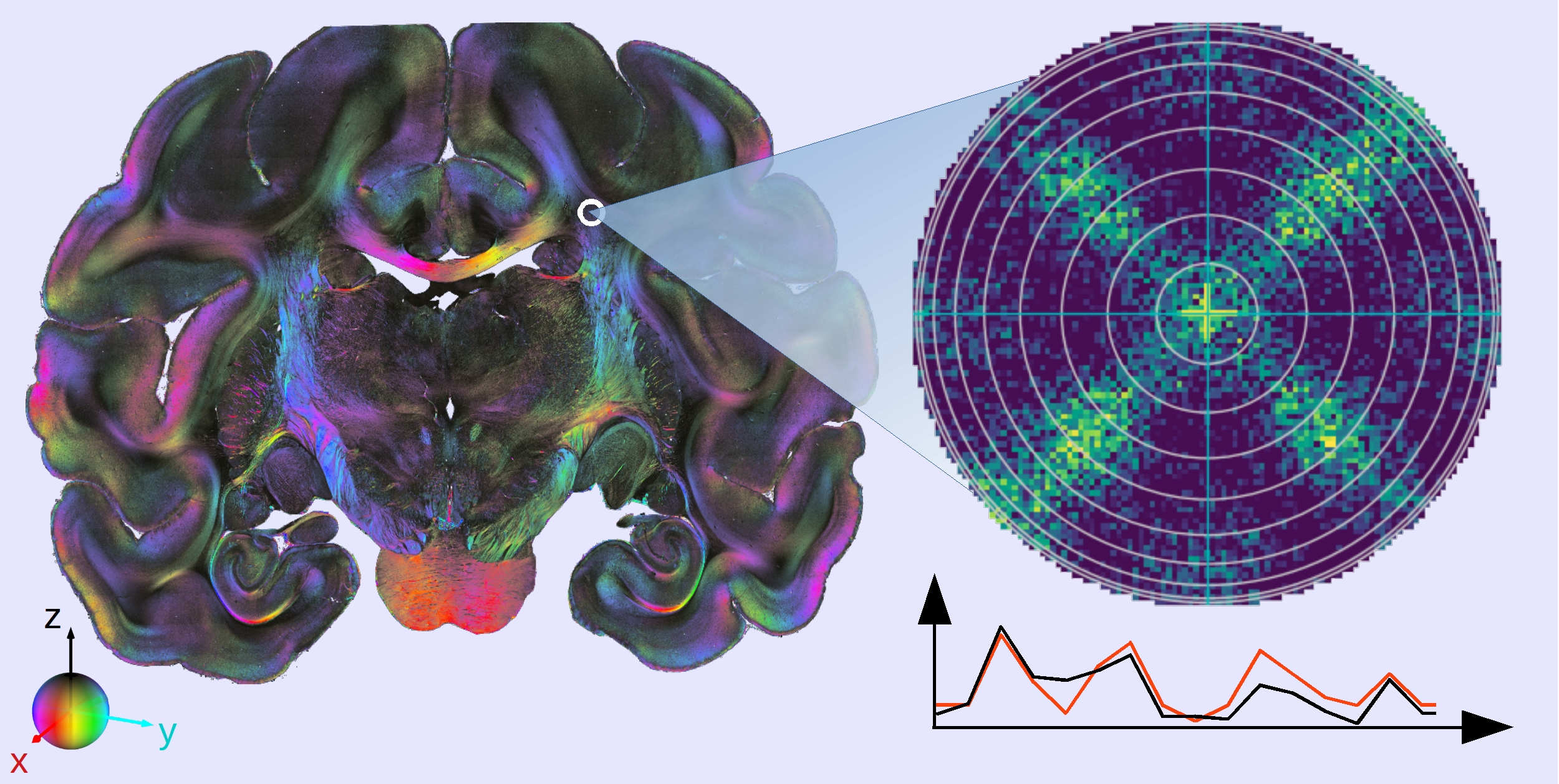Light Scattering Enables New Insights into the Brain
April 2, 2020: We found that the scattering of visible light can be used to resolve the substructure of the brain, such as the crossing angles of nerve fibers with micrometer resolution.
To understand the structure and function of the brain, we need to study the highly complex, three-dimensional pathways of nerve fibers. For a correct reconstruction of the fiber pathways, it is crucial to know the details of the fiber architecture at microscopical level, especially in regions with crossing fibers.
We could show that optical light scattering reveals valuable structural information about brain tissue and can be used to determine crossing nerve fibers and even fiber crossing angles, providing a major enhancement for the reconstruction of complex nerve fiber architectures in the brain. Besides transmission microscopy measurements of various brain sections, we used biophysical modeling and simulations on supercomputers to explain our experimental observations and develop new imaging methods. The developed simulation framework and results can easily be generalized to other microscopy techniques and fibrous tissue samples, enabling applications beyond neuroscience.
In particular, we could show in simulation studies that the distribution of scattered light contains information about the tissue substructure. In further microscopy studies, we demonstrated the great potential of scattering measurements to reveal details of the nerve fiber architecture at microscopical level like the crossing angles of the nerve fibers. The technique allows a more precise reconstruction of nerve fiber crossings in the brain, leading to new insights and a deeper understanding of the structural organization principles in the human brain.
Original Publication: Menzel M, Axer M, De Raedt H, Costantini I, Silvestri L, Pavone F S, Amunts K, Michielsen K. “Toward a High-Resolution Reconstruction of 3D Nerve Fiber Architectures and Crossings in the Brain Using Light Scattering Measurements and Finite-Difference Time-Domain Simulations”. Physical Review X 10:021002
